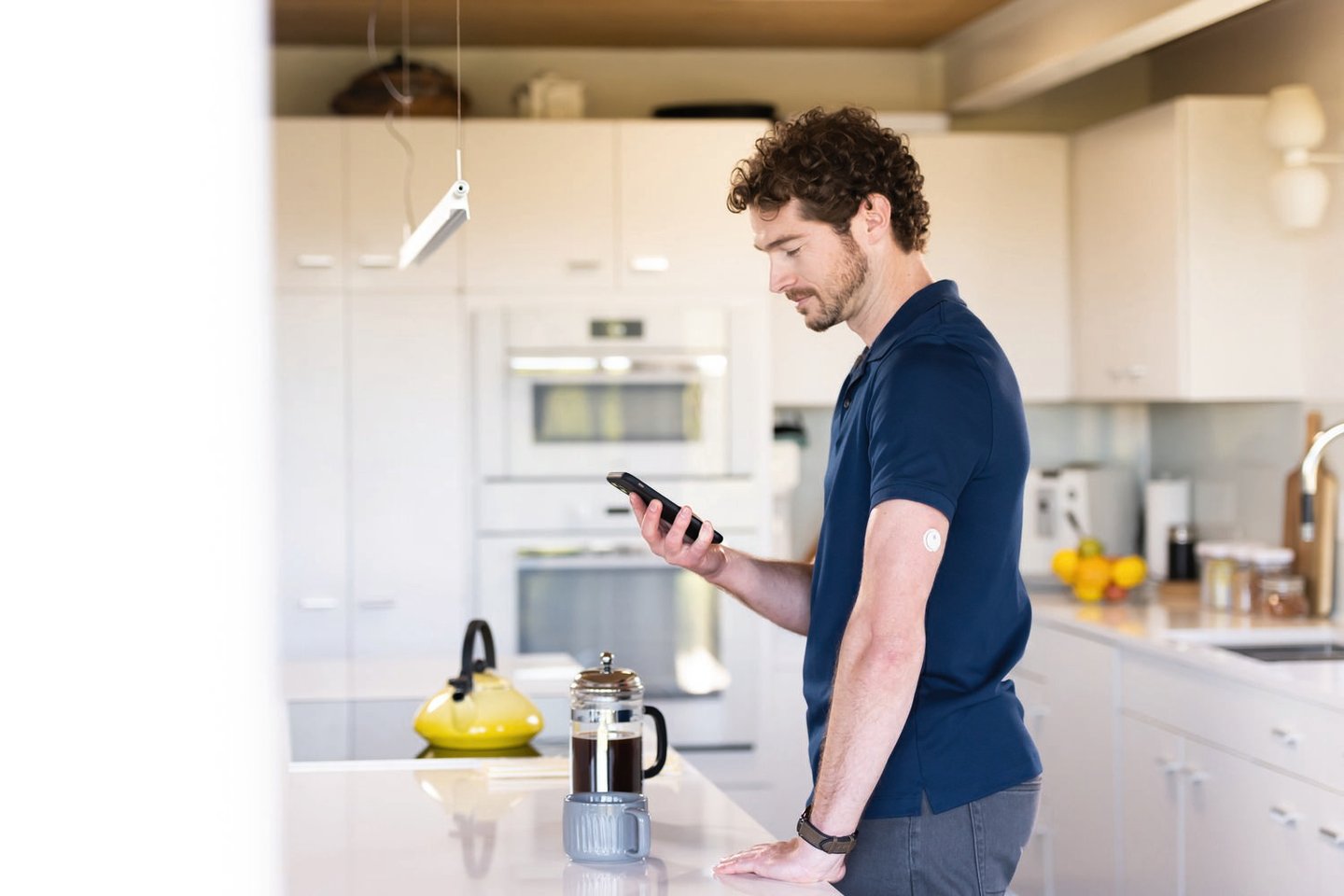Driving innovation in diabetes care
Affordability, supply chain constraints and access to healthcare are on everyone’s mind these days, but for people with diabetes, these are ongoing issues. Costs are high for everything from medications and testing products to hospital inpatient care, and some items are becoming hard to find. Manufacturers say they are working on solutions.
In an often-cited figure, the Centers for Disease Control and Prevention, in its National Diabetes Statistics Report 2022, indicates that 14.7% of U.S. adults have diabetes, which includes diagnosed (11.3%) and undiagnosed (3.4%). What’s more, the CDC also said certain racial and ethnic groups are at a higher risk of developing diabetes. And the numbers prove it: 17.4% of Black Non-Hispanic adults and 15.5% of Hispanic adults have diabetes, diagnosed and undiagnosed.
Manufacturers say they are developing products that can make diabetes care more accessible. “Until recently, technology in insulin delivery was limited to insulin pumps,” said Janice MacLeod, director of clinical advocacy, global professional affairs and clinical education at Medtronic. “With the commercialization of smart insulin pens, a much larger population of people with diabetes now have access to intelligent insulin dosing support for those who choose injection therapy over pumps.”
Medtronic makes the InPen system, which can be used to deliver insulin, calculate insulin doses and estimate carbohydrates for meals.
MacLeod said technology that helps record, share, and interpret diabetes-related data can help the person with diabetes and their care team develop a care plan. “Connected devices support evolving care models that are moving to asynchronous, continuous care with remote data monitoring,” she said. “Recognizing the disparities that exist in diabetes technology access and ongoing use, extending technology options to a broader population is critical.”
[Read more: Dexcom G7 approved by FDA to treat all types of diabetes]
Retailers can help
The pharmacist, often the care team member that healthcare consumers see most frequently, is ideally suited to support people with diabetes self-management, helping them fine-tune their medication or insulin treatment plan. They can also help identify the best tools for patients based on their technology skills, health literacy and numeracy skills. “The pharmacist can help people get off to a strong start with their chosen technology tools, then using the resulting data with them to optimize care,” MacLeod said.
These professionals can help with instructing patients too. There is increased focus on educating people with diabetes about injection technique, injection site rotation and lifestyle management, according to Tom Blount, president of North America for Embecta. “Pharmacists are an important partner in these efforts,” he said.
As the incidence of diabetes increases, poorly managed diabetes creates a cost burden for patients and the healthcare system. “By making it easier for people with diabetes to manage their care consistently, using effective tools and proper techniques, we can help them maintain their long-term health and decrease the risk of other health issues that are related to poorly managed diabetes care,” Blount said.
Formerly part of BD, Embecta introduced pen needles in 1991. Over the years the design innovations have focused on enhanced comfort and safety, with smaller and thinner cannulas. The company’s BD Nano 2nd Gen Pen Needles feature ergonomic enhancements to make the needle shield easy to grip and remove, and a contoured needle base for more reliable injection depth and comfort.
The brand is in the process of developing a patch pump product for Type 2 diabetes under the FDA’s Breakthrough Device designation. “People with Type 2 diabetes make up 90 percent of the population of people living with diabetes,” Blount said. “They have different needs than those with Type 1 diabetes, so we’re developing a tubeless pump designed with their needs in mind.”
[Read more: Diabetes management gets some high-tech help]
People with both types of diabetes are seeking innovative devices, so manufacturers are developing more advanced CGMs. Dexcom recently launched the G7 CGM system, a low-profile, all-in-one wearable system that is 60% smaller than its predecessor. “The desire for simple and easy-to-use technology is especially true for the millions of people living with diabetes who rely on medical devices like CGM to manage their chronic condition 24/7,” said Dexcom CEO Kevin Sayer.
Barriers and solutions
Supply chain constraints are affecting every industry, including diabetes care. “People living with diabetes are facing supply challenges like we’ve never seen before,” said Casey Pflieger, director of retail sales for Owen Mumford, which makes Unifine pen needles. “You are seeing patients forced to search multiple pharmacy locations for their injectables and supplies.”
One unusual challenge is that there is an unanticipated surge in demand for certain medications. People with diabetes and people without diabetes are both seeking GLP-1 agonists such as liraglutide and semaglutide. “When drugs like Wegovy were hailed as miracle weight loss treatments, manufacturing couldn’t keep up with heightened demand and the off-label use of Ozempic exploded.” Pflieger said. “Suddenly the drugs many T2D’s relied on to manage their condition became scarce.”
Even CGMs are in demand among people who do not have diabetes, because they are using the systems for weight loss or to analyze and improve athletic performance. “Movement of these devices from prescription-only to OTC should also significantly improve access, assuming the demand doesn’t outpace forecasting,” Pflieger said.
Another phenomenon, Pflieger said, is that pharmaceutical and device manufacturers are engaging in aggressive contracting with payors that promise massive rebates for exclusivity arrangements. Pflieger noted that while Owen Mumford is successfully planning and bringing in safety stock to help ensure continuity of supply for customers and patients, payors and buyers should be mindful of and avoid the pitfalls of sole-sourced supply. “Otherwise access to therapy and medication adherence suffers.”
[Read more: Be Smart Get Prepared launches diabetic wound care kit]
Convenience can help boost adherence, and automatic blood glucose testing can help. Intuity Medical introduced POGO Automatic Monitor and Cartridges, the first and only FDA-cleared blood glucose monitoring system with 10-test cartridge technology, eliminating the need for separate lancets and glucose strips. Patients click the cartridge door open, pop the multi-test cartridge into the monitor and close the cartridge door. They press the power button, place their finger on the test port, and hold it there until the image on the screen tells them to lift their finger. Then, POGO Automatic analyzes the sample and displays the reading.
Connectivity is another feature that can help people with diabetes adhere to their treatment plans. “Diabetes care management can be a demanding task,” said Badia Boudaiffa, divisional vice president of U.S. commercial operations for Abbott’s diabetes care business. “Connected technology allows people living with diabetes to have a more seamless experience.” The company is working with partners to collaborate on new advancements in connectivity, such as smartphone app integration, remote monitoring smart insulin pens and automated insulin delivery systems that connect with CGMs.
Abbott makes the FreeStyle Libre portfolio, which Boudaiffa said is the most affordable CGM in pharmacies today. The company is working with partners, including sponsoring the American Diabetes Association’s Health Equity Now platform, to tackle barriers so all people living with diabetes can access the latest medical technologies, no matter their income level, race or background.
Meeting other needs
Comfort is another consideration. Last year HTL-Strefa, which makes medical sharps, introduced the Droplet Micron 34-gauge pen needle, which is 3.5 mm long and is the shortest, thinnest available. “It’s all about comfort and reducing the anxiety associated with having to deliver an injection,” said Chris Woeste, vice president of sales North America. “It improves the injection experience.”
The bigger trend, Woeste said, is that more companies are entering the diabetes products category, a change from the old pattern of having only a few big players in certain segments. “The increased competition in the space benefits retailers and patients alike by driving down costs and improving efficiency,” he said.
[Read more: Enhancing diabetes prevention and care services]
Innovations are also appearing from companies that offer other products, such as nutrition. Simply Good Foods Company makes Atkins and Quest products, including new Atkins Nacho Cheese Flavor Protein Chips with 13 grams of protein and 4 grams of net carbs and Quest Cheese Crackers with 10g of protein and 5g of net carbs. “Fresh, low sugar and high protein are the most common perceptions of what’s considered healthy,” said Colette Heimowitz, vice president of nutrition and education for Simply Good Foods Company. “When you remove carbs, you have room for protein and fiber and that’s satiating.”
The brands’ recipe pages are the most often visited on the website, Heimowitz said, and the recipes were prepared by the company’s nutrition department and based on recommendations from the American Diabetes Association. While she agrees that pharmacists can play an important role in diabetes education, retailers should also build wellness sections featuring these nutrition-related products and reinforce the message that a low carb, high protein diet can help people with diabetes maintain their health.
Wound care is another important segment, and the need for these products is increasing as healthcare costs rise. “Unaffordable healthcare is leading people living with diabetes towards more self-care wound care treatments,” said Geolyn Gonzalez, vice president of sales and marketing for Total Resources International.
Another trend, Gonzalez said, is a preference for the convenience of pre-organized kits and bundled products or services. TRI recently launched the Be Smart Get Prepared diabetic wound care line, designed to enable people living with diabetes to rapidly and successfully care for and treat their wounds at home or while traveling. Retailers can engage with these consumers by setting up an Infection Prevention section, and by providing information and making the products easy to find on shelves.
“With diabetes being such a complex and demanding disease, encouraging and educating people living with diabetes to be more proactive instead of reactive is key in helping them get ahead of their wound care management,” Gonzalez said.






